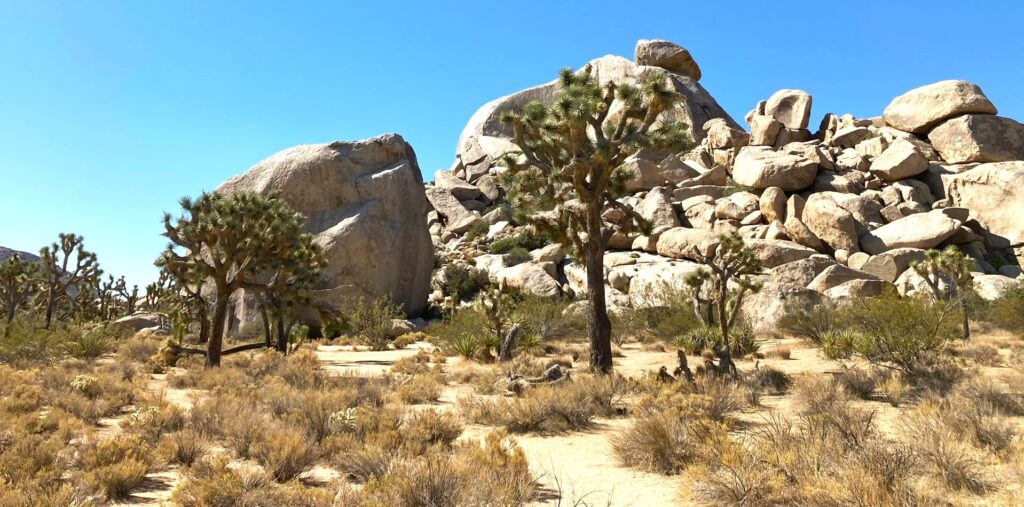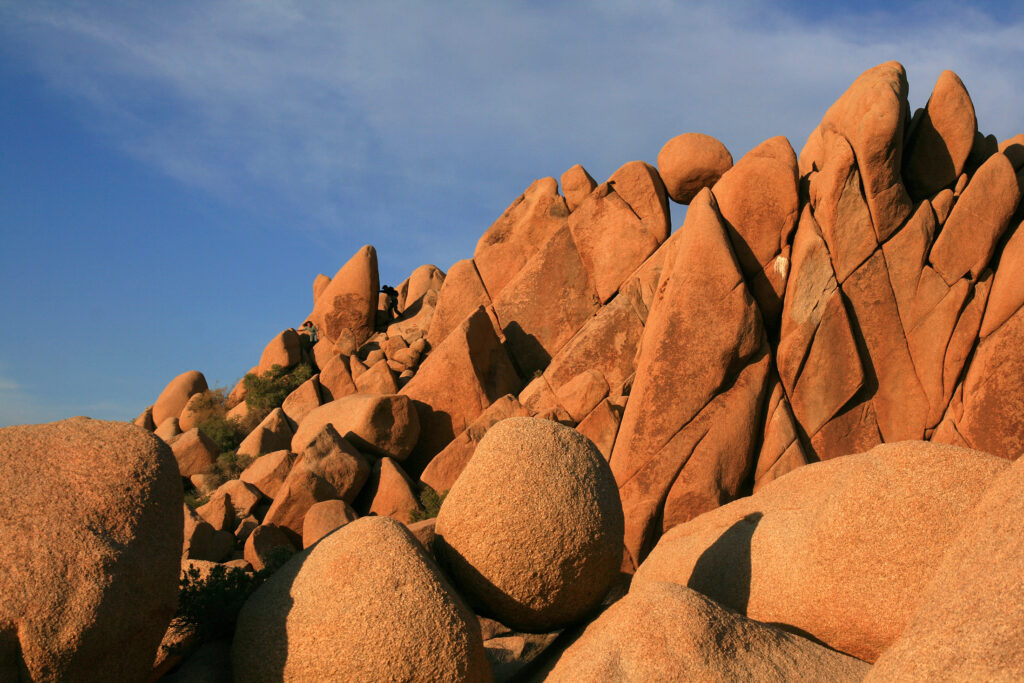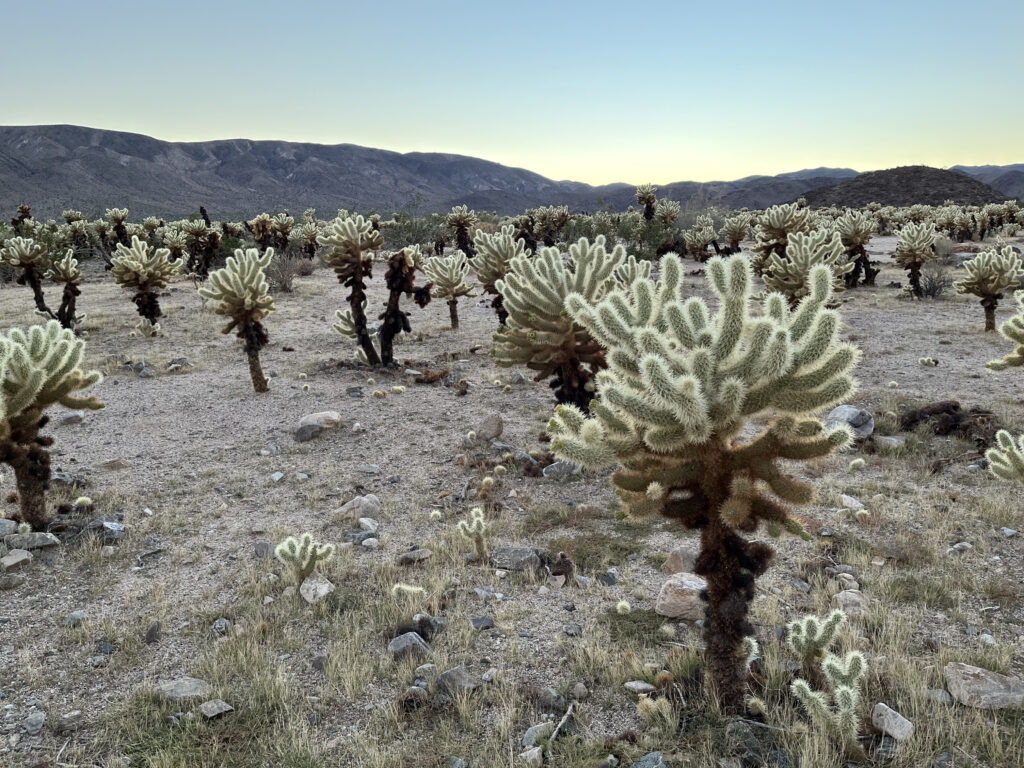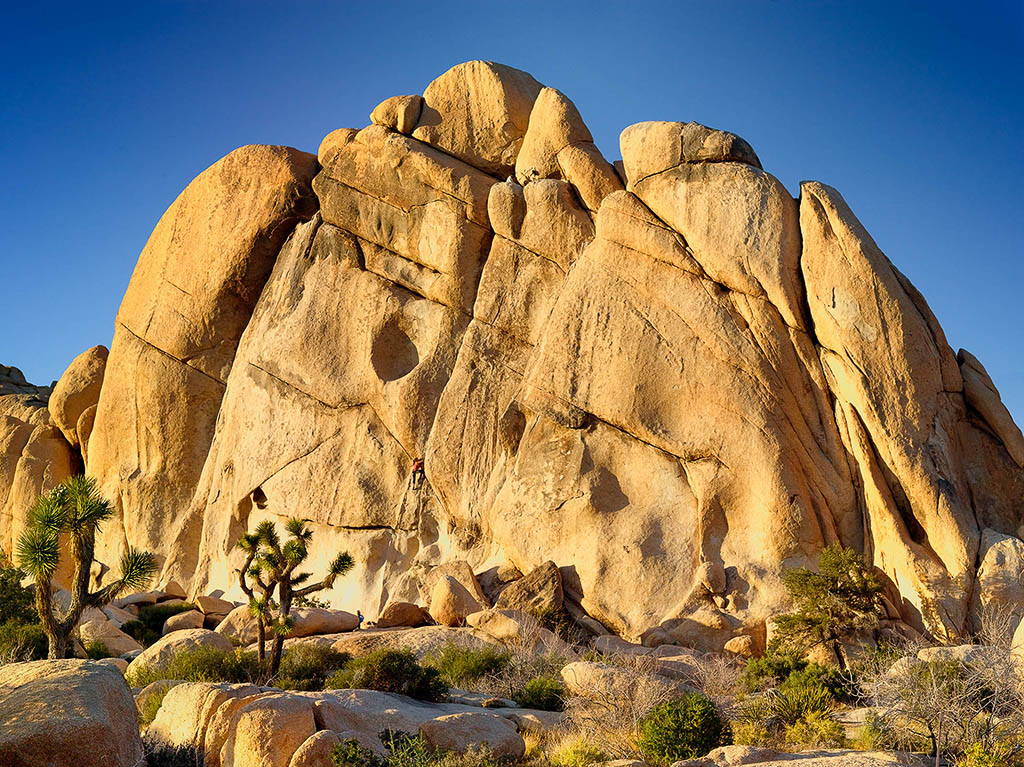There are places on Earth that feel like another planet, landscapes so surreal and captivating they seem plucked from a dream. Joshua Tree National Park is one of those places. Sprawling across nearly 800,000 acres of Southern California, it’s a land of gnarled trees reaching for the sky, massive boulder piles assembled by a giant’s hand, and a silence so profound you can hear your own heartbeat.
This is more than just a park; it’s an experience that awakens the senses and inspires the soul. It’s where the stark, rugged beauty of two distinct desert ecosystems collides, creating a wonderland for hikers, climbers, stargazers, and anyone seeking to disconnect from the modern world. If you’re ready for an adventure that is both grounding and otherworldly, welcome to Joshua Tree.

The Land of Seussian Trees
You can’t talk about Joshua Tree without celebrating its namesake: Yucca brevifolia, the Joshua tree. These are not trees in the traditional sense, but a species of yucca, part of the agave family. With their spiky leaves and contorted, reaching branches, they create a beautifully bizarre forest across the Mojave Desert. Legend says that 19th-century Mormon settlers named the plant after the biblical figure Joshua, seeing the limbs as outstretched arms guiding them westward in prayer.
Walking among them feels like stepping into a Dr. Seuss book. Each one has its own personality, sculpted by wind, sun, and time. They are the stoic, iconic sentinels of this desert, providing critical habitat for a surprising amount of wildlife, from the tiny yucca moth, with whom they share a vital symbiotic relationship, to the birds that nest in their fibrous trunks.

A Playground of Monzogranite Giants
For those with a spirit of adventure, Joshua Tree is a world-class playground. The park is famous for its seemingly endless piles of monzogranite boulders, rounded and weathered over millions of years. These formations create a natural jungle gym for rock climbers and boulderers who travel from around the globe to test their skills on the grippy, textured rock. With thousands of named climbing routes, there are challenges for every skill level, from first-timers to seasoned pros.
But you don’t need ropes to experience the park’s geological wonders. The hiking here is phenomenal. For an easy, family-friendly introduction, the 1-mile Hidden Valley Nature Trail loops through a stunning rock-enclosed valley rumored to have been used by cattle rustlers. For a more strenuous trek with a rewarding payoff, the 3-mile climb up Ryan Mountain offers breathtaking 360-degree views of the park. Every trail, whether a short nature walk or a challenging backcountry trek, offers a new perspective on the park’s rugged beauty.

Where Two Great Deserts Meet
What makes Joshua Tree National Park biologically unique is that it’s a crossroads. Here, two vast and distinct desert ecosystems converge.
- The Mojave Desert: Occupying the western half of the park, the Mojave is higher, cooler, and wetter. This is the exclusive home of the iconic Joshua tree, which thrives in its higher elevation and cooler temperatures. The landscape is characterized by the famous granite boulder piles and vast, open spaces.
- The Colorado Desert: To the east, the elevation drops, and the landscape transforms into the hotter, drier Colorado Desert. Here, the Joshua trees vanish, replaced by plants adapted to harsher conditions like creosote bush, ocotillo, and the infamous “jumping” cholla cactus. A visit to the Cholla Cactus Garden (from a safe distance!) offers an unforgettable look at a dense forest of these fuzzy-looking but fiercely spiky cacti, especially beautiful when backlit by the rising or setting sun.

Must-See Vistas and Otherworldly Rock Formations
Beyond the trees and trails, Joshua Tree is dotted with iconic landmarks that are easily accessible and endlessly photogenic. No trip is complete without visiting Skull Rock, a granite boulder that has naturally eroded to uncannily resemble a human skull, located right off the main park road. Nearby, a short hike will take you to Arch Rock, a natural granite arch that frames the desert sky perfectly.
For the most expansive view in the park, drive up to Keys View. From this breathtaking overlook perched on the crest of the Little San Bernardino Mountains, you can gaze down at the entire Coachella Valley. On a clear day, the view stretches from the shimmering Salton Sea to the hazy silhouette of Signal Mountain in Mexico. It’s a powerful reminder of the vastness and scale of this incredible landscape.

Under a Blanket of Infinite Stars
When the sun dips below the horizon, Joshua Tree puts on its second, equally spectacular show. As an officially designated International Dark Sky Park, the park is far removed from the light pollution of major cities, revealing a night sky of astonishing clarity and brilliance. On a moonless night, the Milky Way arcs across the heavens like a celestial river, dusted with countless stars, planets, and the occasional passing meteor.
Laying on a blanket at a campsite like Jumbo Rocks or simply pulling over at a designated viewpoint and looking up is a humbling, awe-inspiring experience. It reconnects you to the cosmos in a way that’s simply not possible in our brightly lit modern world.

Planning Your Desert Adventure
A trip to Joshua Tree requires planning, as its wild beauty comes with rugged conditions.
- Best Time to Visit: The most pleasant seasons are spring (March-May) and fall (October-November), when daytime temperatures are mild. Wildflower blooms in the spring are a special treat. Summers are dangerously hot, with temperatures often exceeding 100∘F (38∘C), while winters can be cold with freezing nights.
- Water is Life: This is the most important rule of the desert. There is no water available in the park. You must bring all the water you will need—at least one gallon per person, per day.
- No Cell Service: Don’t expect to have a signal in most of the park. Download maps and information beforehand. Inform someone of your plans before you enter.
- Fees and Entrances: There is a vehicle entrance fee, valid for seven days. The main entrances are in the towns of Joshua Tree, Twentynine Palms, and Cottonwood Spring.
- Leave No Trace: Respect this fragile environment. Pack out everything you pack in, stay on designated trails, and do not disturb wildlife or touch the delicate plants.

Joshua Tree is a place of profound beauty, stark contrasts, and deep silence. It’s a landscape that challenges you, inspires you, and ultimately leaves an indelible mark on your soul. Pack your sense of wonder and get ready to explore.
